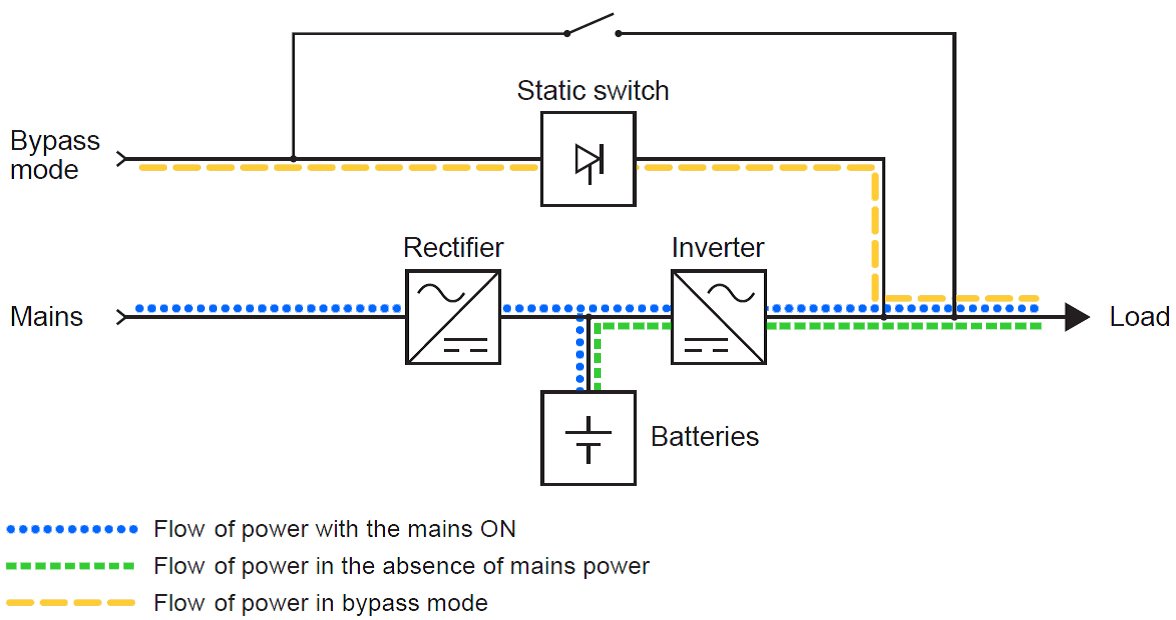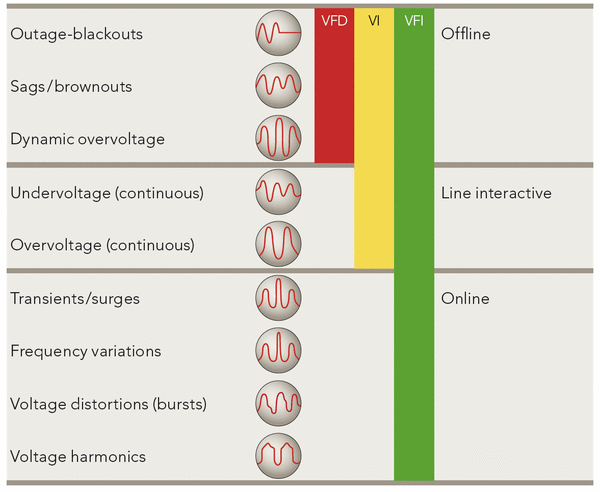A UPS by definition is
An UNINTERRUPTIBLE POWER SUPPLY or UNINTERRUPTIBLE POWER SOURCE (UPS) is an electrical apparatus that provides emergency power to a load when the input power source or mains power fails. A UPS differs from an auxiliary or emergency power system or standby generator in that it will provide near-instantaneous protection from input power interruptions, by supplying energy stored in batteries, supercapacitors, or flywheels. The on-battery runtime of most uninterruptible power sources is relatively short (only a few minutes) but sufficient to start a standby power source or properly shut down the protected equipment.
A UPS is typically used to protect hardware such as computers, data centers, telecommunication equipment or other electrical equipment where an unexpected power disruption could cause injuries, fatalities, serious business disruption or data loss. UPS units range in size from units designed to protect a single computer without a video monitor (around 200 volt-ampere rating) to large units powering entire data centers or buildings. (https://en.wikipedia.org/wiki/Uninterruptible_power_supply)
In order to choose the correct UPS to achieve the delivery of constant, high quality power, it is vital to understand the different types of UPS topologies available and the types of Power Quality disturbances they protect against. Modern technology offers a variety of solutions to ensure a good power quality, but STATIC UPS systems have undoubtedly proved themselves over the years as the most versatile and commonly adopted solution. According to the International Standard 62040-3, it distinguishes between three major static UPS topologies according to the UPS internal schematics adopted.
“Offline” UPS Topology – VFD
Otherwise known as Voltage and Frequency Dependent these UPS units power your connected load from the Mains Utility Supply under normal operating conditions. When the mains supply fails the UPS automatically switches the load to its internal battery power source to continue running until the battery is exhausted. There is generally a transfer time of a few milliseconds.

“Line Interactive” Topology – VI
Known as Voltage Independent UPS units these power your connected load from Mains Utility Power through an AVR (Automatic Voltage Regulator) which protects against under and over voltages. When the Mains Supply is outside the UPS tolerances, the UPS instantaneously switches the load to its internal battery power source to continue running until the battery is exhausted. There is generally a transfer time of a few milliseconds.

“Online” Topology – VFI
These UPS units are Voltage and Frequency Independent and so is the only UPS unit that assures TOTAL load protection against ALL Power Quality Problems. Mains utility Power flows through a Rectifier which in effect charges the DC Battery. The DC Battery Power they flows through an Inverter to supply the Load. If Mains Power is lost or out of tolerance, the load continues to be supplied from the battery with Zero break in supply until the battery is exhausted. There is also a bypass facility to ensure continuity of power if a failure occurs or maintenance is required.

Below are some commonly experienced Power Quality Disturbances and the recommended UPS Topologies to suit.

Share this Post

